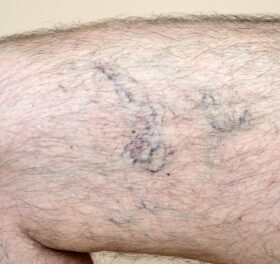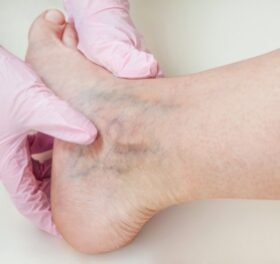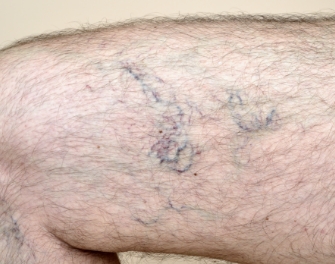Venous reflux disease is a medical condition where the valves in your leg veins fail to close properly, causing blood to flow back and pool in your leg veins. Over time, venous reflux disease can cause a range of symptoms, including varicose veins, spider veins, leg pain, swelling, and even skin ulcers. In this article, we will discuss what happens if venous reflux is not treated, including the potential complications and risks.
At Vein Treatment Clinic, we specialize in minimally invasive procedures for the treatment of venous reflux disease. We always diagnose the root cause of spider veins and varicose veins via vascular imaging and duplex ultrasound before curating a personalized treatment plan. Our vein clinics are led by board-certified vein doctors, and we offer hassle-free insurance verification even before the first appointment. With state-of-the-art locations across the United States, including New York, New Jersey, Long Island, California, and Washington DC, we provide comprehensive vascular medicine services to our patients. Please schedule an appointment at your nearest vein treatment clinic to explore your vein treatment options.
Complications of Untreated Venous Reflux
If venous reflux is not treated, it can lead to a range of complications and risks. Some of the most common complications include:
- Chronic Venous Insufficiency (CVI): Chronic venous insufficiency is a medical condition where the veins in your legs cannot pump blood back to your heart efficiently. This can cause blood to pool in your leg veins, leading to swelling, pain, skin discoloration, and even skin ulcers. If left untreated, chronic venous insufficiency can cause permanent damage to your veins and lead to severe disability.
- Blood Clots in Deep Veins: Venous reflux disease can also increase your risk of developing blood clots in deep veins, known as deep vein thrombosis (DVT). DVT can be life-threatening, as it can cause a pulmonary embolism (PE) if the blood clot breaks off and travels to your lungs. Symptoms of DVT include leg pain, swelling, warmth, and redness. If you experience these symptoms, seek immediate medical attention.
- Skin Changes and Ulcers: Over time, venous reflux can cause skin changes and ulcers in your legs. These changes can include thickening of the skin, skin discoloration, and even skin ulcers. If left untreated, these ulcers can become infected and cause pain and disability.
- Reduced Quality of Life: Untreated venous reflux can cause a range of symptoms that can affect your quality of life. These symptoms can include pain, swelling, skin changes, and difficulty standing or sitting for long periods. If you experience any of these symptoms, seek medical attention as soon as possible.
Treatment Options for Venous Reflux
At Vein Treatment Clinic, we offer a range of minimally invasive procedures for the treatment of venous reflux disease. These procedures include:
- Sclerotherapy: Sclerotherapy is a minimally invasive treatment that involves injecting a solution directly into varicose veins or spider veins. The solution irritates the lining of the blood vessels, causing them to collapse and fade away over time. This procedure is highly effective for treating small varicose veins and spider veins and is often preferred over surgical options due to its minimal invasiveness and effectiveness.
- Endovenous Laser Ablation: Endovenous laser ablation (EVLA) is a minimally invasive treatment for larger varicose veins. During the procedure, a laser fiber is inserted into the affected vein, and the heat from the laser causes the vein to collapse and close off. This treatment is highly effective and less invasive than traditional surgical options, with a shorter recovery time and less scarring.
- Radiofrequency Ablation: Radiofrequency ablation (RFA) is a minimally invasive treatment that uses heat generated by radiofrequency energy to close off a diseased vein. During the procedure, a catheter is inserted into the affected vein, and radiofrequency energy is applied to the vein’s wall, causing it to shrink and close. RFA is an effective treatment for larger varicose veins and is less invasive than traditional surgical options.
- VenaSeal: VenaSeal is a minimally invasive treatment that uses a medical adhesive to seal off diseased veins. During the procedure, a small catheter is inserted into the affected vein, and a medical adhesive is injected into the vein’s walls, causing it to collapse and close. This treatment is highly effective, requires no anesthesia or incisions, and involves little to no downtime.
- ClariVein: ClariVein is a minimally invasive treatment that combines mechanical and chemical methods to close off diseased veins. During the procedure, a rotating catheter is inserted into the affected vein, and a chemical solution is injected into the vein’s walls, causing it to collapse and close. This treatment is highly effective and requires no anesthesia or incisions, allowing for minimal downtime.
- Ambulatory Phlebectomy: Ambulatory phlebectomy is a minimally invasive treatment that involves removing large varicose veins through small incisions in the skin. During the procedure, tiny incisions are made in the affected area, and the vein is removed through the incisions. Ambulatory phlebectomy is a preferred treatment option for patients with large varicose veins, and the procedure can typically be completed in less than an hour.
Wearing Compression Stockings
In addition to these minimally invasive procedures, wearing compression stockings can also help manage the symptoms of venous reflux disease. Compression stockings apply pressure to your legs, helping to improve blood flow and reduce swelling. It’s important to note that untreated venous reflux disease can lead to severe complications and risks. If you experience any symptoms of venous reflux disease, seek medical attention as soon as possible.
At Vein Treatment Clinic, we offer comprehensive vascular medicine services, and our board-certified vein doctors can help diagnose and treat your condition. Please schedule an appointment at your nearest vein treatment clinic to explore your vein treatment options.











